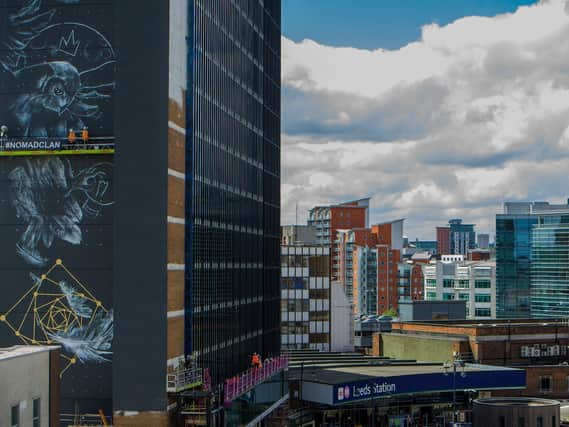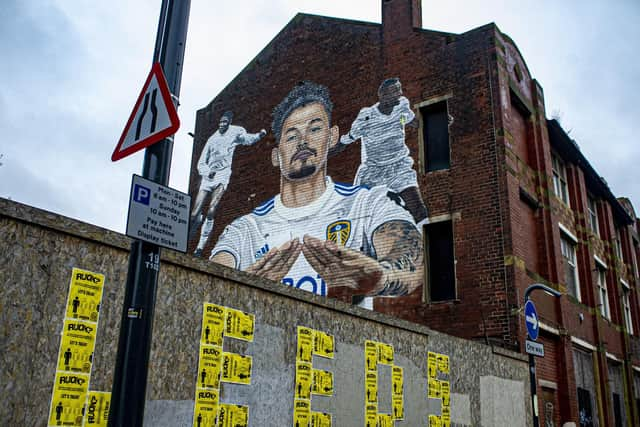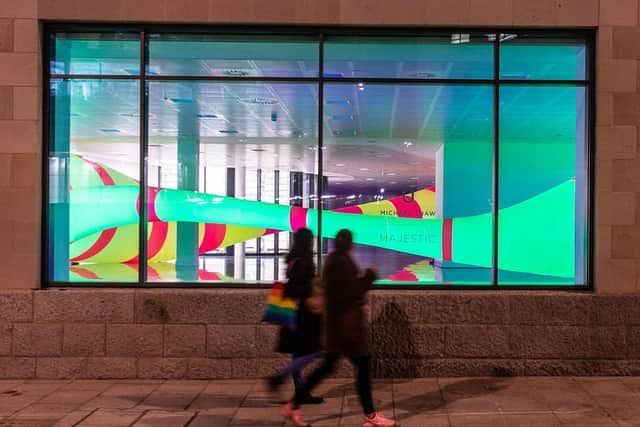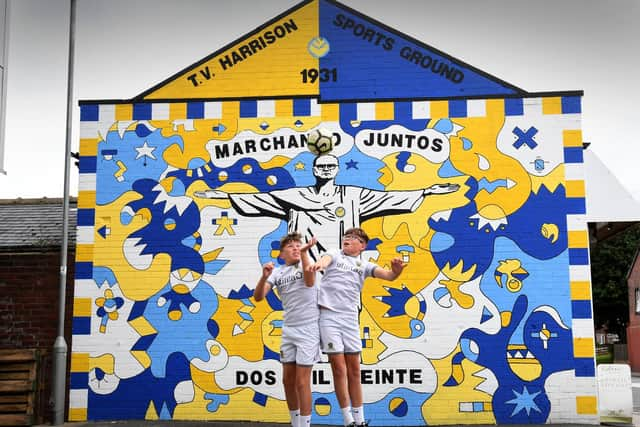Demand for public art in Leeds rises as artists pay tribute to Marcelo Bielsa, Rob Burrow and other sporting stars


No longer content with just being functional office spaces, businesses and charities in the city have been commissioning artists to create bespoke designs on their brick walls.
Across the city, walls have been adorned with murals celebrating sporting stars like Rhinos legend Rob Burrow, Leeds United manager Marcelo Bielsa and later this year, East Street Arts will work with Marching Out together to create a mural celebrating the club’s LGBT community.
Advertisement
Hide AdAdvertisement
Hide AdIt is not just people on the pitch who are being celebrated, during the pandemic Andy McVeigh, known as the Burley Banksy painted electrical boxes outside the city’s hospitals, to say thank you to Leeds' frontline hospital staff.


East Street Arts artistic director Jon Wakeman said it feels like the time is “finally right” in the city after years of resistance to the street art movement.
Mr Wakeman said: “It has been interesting to see the increase in demand over the last few years and I think there have been a few projects we have worked on that have really helped spur that on - the obvious one being Athena Rising on Platform One in 2017.
“That felt like a massive piece for the city and there was a sense of it saying ‘it is okay to do this’.
Advertisement
Hide AdAdvertisement
Hide Ad“There was a groundswell of public art going on for years and I don’t know why but it was never embraced in Leeds like in other cities, and organisations never pushed for it.


“Part of our programme A City Less Grey has been against that resistance and I think it was the Marching On Together mural up at Quarry Hill that really struck a chord.
“Suddenly the time was right in Leeds and it felt like people were really responding.”
He added: “Public art is a really great way of a city going beyond a corporate building and identity.
Advertisement
Hide AdAdvertisement
Hide Ad“Who would have gone and taken a building of the Platform One building beforehand?


“Recently someone told me that he’d been stopped a few times by fans asking where the mural of Bielsa was.
“As soon as the world reopens, I can see Leeds fans coming to explore the city from all over the world, wanting to check these pieces out and celebrate the club’s achievements
“People want to feel ownership over public artwork, whether that's the Warrior Girl in Harehills or a Kalvin Phillips mural, they want to see what is important to them reflected back.
Advertisement
Hide AdAdvertisement
Hide Ad“I think the demand for public art will continue and the beautiful thing about it is how accessible it is.
“Walking around a city filled with public art is like opening up a big comic book - full of colour, life and stories.”
Artist Jack Ellis, is the co-founder of Leeds Street Gallery, a collective of local artists working to secure legal spaces for graffiti and street art.
Since the group started, Jack, and his fellow artists, have worked alongside Leeds City Council and local businesses to create artwork, particularly in areas hit by illegal graffiti.
Advertisement
Hide AdAdvertisement
Hide AdMr Ellis said: “I've certainly found over the last few years that there has been more public art in Leeds.
“We have done all sorts of work as a group - we are responsible for some of the sporting murals that have popped up like the Josh Warrington one, we’ve worked with charities such as Red Nose Day, and with Beeston in Bloom to create murals in Cross Flatts Park.
“Where it has really worked is when we have worked with charities, who pay artists fairly and just want a great piece of art that benefits the community and spreads its message.
“Good public art, made by local artists, showcases what the businesses or charities are all about, much better than a generic marketing agency ever could.”
Advertisement
Hide AdAdvertisement
Hide AdHe added: “Another benefit is that it discourages illegal vandalism.
“There's an element of respect in the street art scene and if people can see that an artist has put a lot of work into and produced a good piece of art, it is less likely to be tagged.
“For example, we work with Jubilee Social Club in Hyde Park, which used to be covered in graffiti.
“Now it has become a legal tagging wall and each week artists work together to paint new artwork. It doesn’t cost them anything, but they get fresh artwork every week.
Advertisement
Hide AdAdvertisement
Hide Ad"Having Leeds artists create public artwork means the art can reflect the local community properly but it also invites the community to stop, chat to the artist and understand the value of the street art.”
Leeds property development and investment company Rusbond, responsible for redeveloping the Majestic and the First White Cloth Hall, have commissioned many local artists to create public work in their buildings.
It has worked with Leeds Art University graduate on photography projects, Sheffield-born Tim Etchells to install Neon signage on the Algernon Firth building and most recently, Michael Shaw, who installed a yellow and pink inflatable in the Majestic, to provoke people to reconsider the way they interact with ‘real’ spaces following the pandemic.
Georgina Maud, creative lead at Rushbond PLC said: “Creativity is at the heart of all of our work. Rushbond takes Art in the environment seriously, not only for the lasting aesthetic improvement to a place but also for the process of its creation.
Advertisement
Hide AdAdvertisement
Hide Ad“There is so much creative talent out there, what better way to see it than placed in the context of our built environment shaping our lives for the better.
“We want to remind people just how engaging and inspiring a physical space can be, and how interesting visual arts can spark creativity.
“We hope that once we emerge from lockdown, people in the city region are encouraged to safely and playfully reconnect with their physical environments because of the art.”